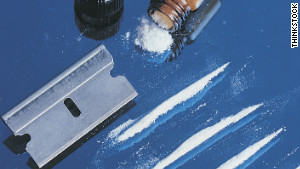Most of those deaths involved opioids, a family of painkillers including illicit heroin and fentanyl as well as legally prescribed medications such as oxycodone and hydrocodone. In 2016 alone, 42,249 US drug fatalities -- 66% of the total -- involved opioids, the report says. That's over a thousand more than the
41,070 Americans who die from breast cancer every year.
Much of the increase was driven by the rise in illicit synthetic opioids like fentanyl and tramadol. The rate of deadly overdoses from synthetic opioids other than methadone has skyrocketed an average of 88% each year since 2013; it more than doubled in 2016 to 19,413, from 9,580 in 2015.
Heroin also continues to be a problem, the report says. Since 2014, the rate of heroin overdose deaths has jumped an average of 19% each year.
The opioid crisis has raised significant awareness of prescription painkillers. Between 1999 and 2009, the rate of overdoses from such drugs rose 13% annually, but the increase has since slowed to 3% per year.
In 2009, prescription narcotics were involved in 26% of all fatal drug overdoses, while heroin was involved in 9% and synthetics were involved in just 8%. By comparison, in 2016, prescription drugs were involved in 23% of all deadly overdoses. But heroin is now implicated in about a quarter of all drug fatalities, and synthetic opioids play a role in nearly a third.
These increases have contributed to a shortening of the US life expectancy for a second year in a row.
A state-by-state look
The states with the highest rates of overdose in 2016 were West Virginia, Ohio and New Hampshire, the report said. The rate of overdose in West Virginia was over 2.5 times the national average of 19.8 overdose deaths for every 100,000 people.
While the outlook nationwide is fairly bleak, it's particularly bad in some states. Twenty-two states and the District of Columbia had overdose rates significantly higher than the national average.
While overdose rates increased in all age groups, rises were most significant in those between the ages of 25 and 54.
Provisional data for 2017 from the CDC show no signs of the epidemic abating, with an estimate of more than 66,000 overdose deaths for the year. "Based on what we're seeing, it doesn't look like it's getting any better," said
Bob Anderson, chief of the mortality statistics branch at the National Center for Health Statistics.
He said the data for this year were still incomplete because of the time it takes to conduct death and toxicology investigations. However, Anderson says, the 2017 estimates are alarming. "The fact that the data is incomplete and they represent an increase is concerning," he said.
But addiction specialist
Dr. Andrew Kolodny said that despite the devastating overdose numbers, there appeared to be some indicators of good news.
"Even though deaths are going up among people who are addicted heroin users, who use black-market opioids ... it's possible that we are preventing less people from becoming addicted through better prescribing," said Kolodny, executive director of Physicians for Responsible Opioid Prescribing.
Studies have shown that while rates of opioid prescribing remain high in the US,
they have decreasedfrom a peak of 81 prescriptions for every 100 people in 2010 to about 70 per 100. Kolodny also pointed to recent surveys indicating that opioids were being less-frequently abused by
teens.
A public health emergency
In October,
President Trump declared the opioid crisis a public health emergency. "As Americans, we cannot allow this to continue. It is time to liberate our communities from this scourge of drug addiction," he said. "We can be the generation that ends the opioid epidemic."
The week following, the President's Commission on Combating Drug Addiction issued its
final report with more than 50 recommendations to help solve the opioid crisis, including expanding medicated assisted treatment, increasing the number of drug courts, coordinating electronic health records and increasing prescriber education.
However, Kolodny and other public health experts were disappointed that the actions by the president and the commission were not accompanied by funds.
"You don't call it an emergency and sit around do nothing about it -- and that's where we are," Kolodny said. "The doing something should be a plan from the agencies ... and it should be seeking money from Congress."
Commission member and former Rep.
Patrick Kennedy agreed. "It means nothing if it has no funding to push it forward. You can't just have a speech like the President gave."
But fellow commission member
Bertha Madras said that funding requests can't be immediately answered and pointed out that the White House is working with agencies now to determine costs and processes to implement the group's recommendations. "The commitment has to be accompanied by wise decisions and wise planning and a very judicious use of funding," she said.
The White House's Council of Economic Advisers recently
estimated that the cost of the opioid crisis in 2015 alone was $504 billion, nearly 3% of gross domestic product.
Kennedy worries that the tax bill passed this week will only worsen the crisis. "It's going to be the vote that sets this country back further than anything else in our ability to tackle this crisis. Period. There's going to be no more significant vote on opioids."
The bill, which is now headed to the President's desk to be signed into law, eliminates provisions of the individual mandate or penalties for being uninsured that were required under Obamacare. Once it is enacted, the nonpartisan Congressional Budge Office estimates,
13 million individuals will be uninsured by 2027, and health insurance premiums will go up. According to the
2016 Surgeon General's Report on Alcohol, Drugs, and Health, 30% of Americans do not seek any sort of addiction treatment because they do not have insurance and cannot afford treatment.
"We've got a human addiction tsunami. We need all hands on deck," Kennedy said.





No comments:
Post a Comment